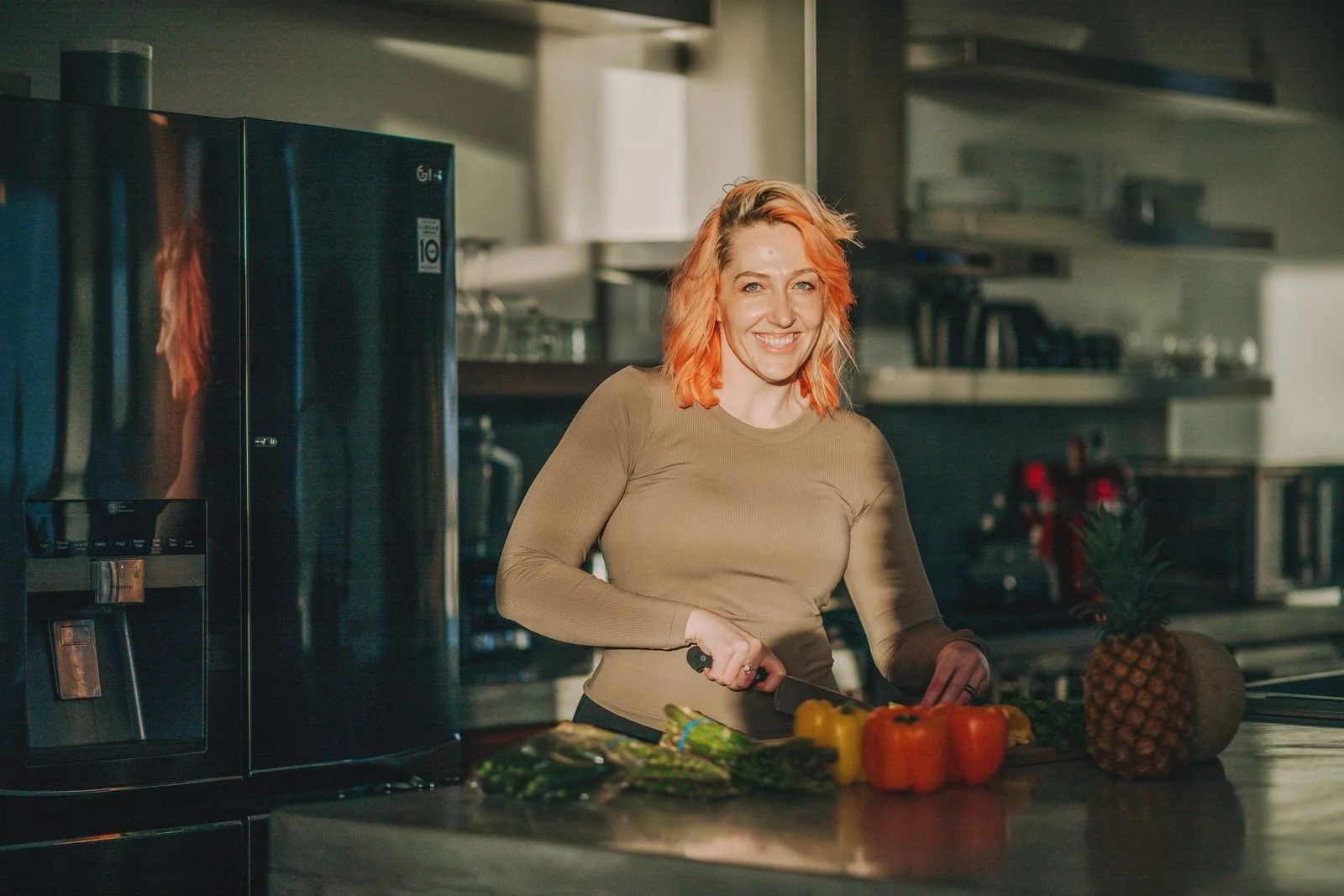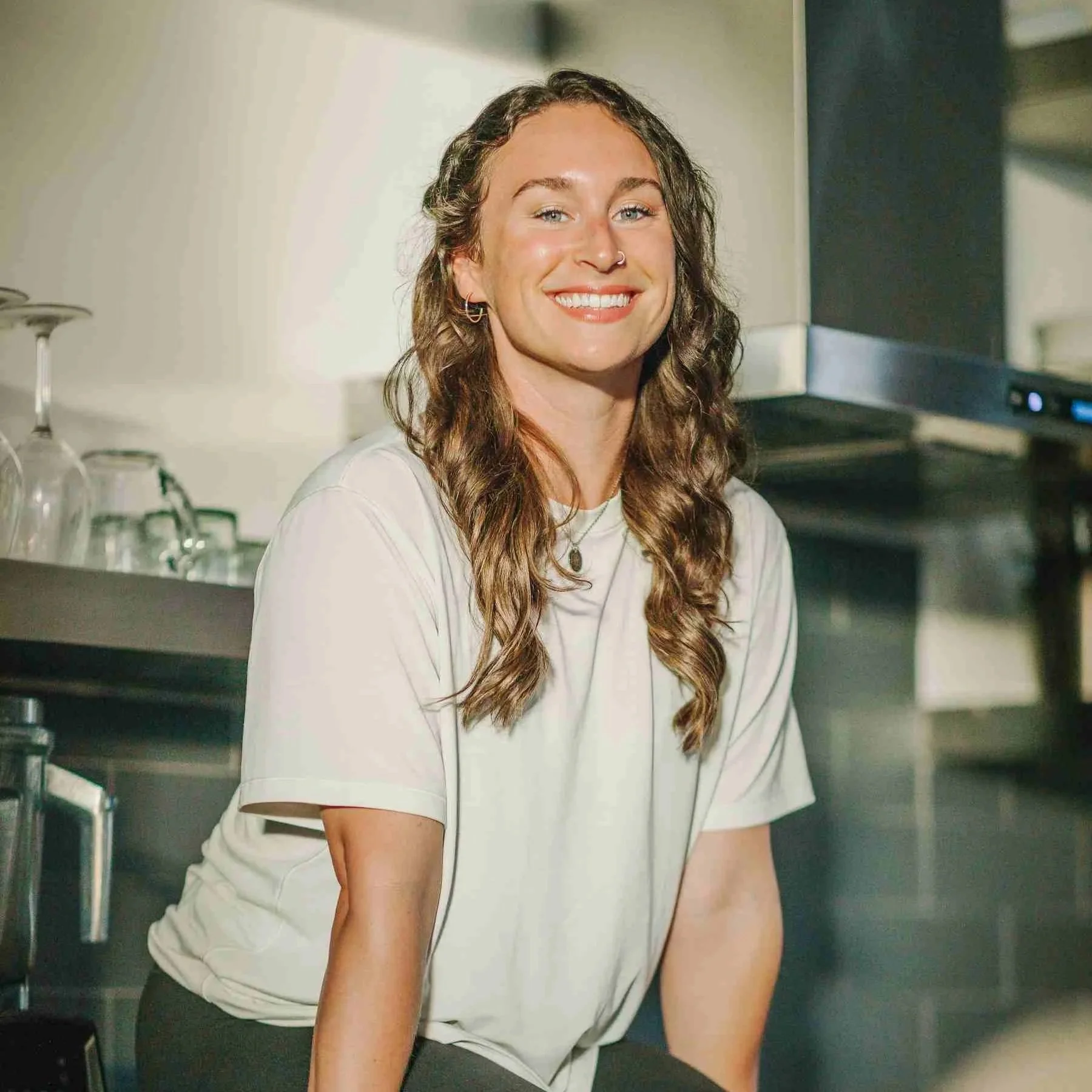How to Read a Nutrition Label Without Overthinking It
You’ve probably heard it before: “Just learn how to read nutrition labels.”
Sounds simple, right? Until you’re standing in a grocery aisle, squinting at numbers and wondering if you’re somehow doing it wrong. For many people, food labels don’t feel helpful; they feel like a test.
And when we associate food with doing something right or wrong, that’s where stress and second-guessing sneak in.
But here’s the truth: a nutrition label isn’t a verdict - it’s just data. And when you know how to read that data in a way that actually supports your goals, it gets a whole lot easier to make confident food choices. Whether you’re at home, traveling, tracking your macros in a fat loss phase, or training for your next competition, understanding food labels can actually help us work through the idea that foods are “good” or “bad” and better understand the makeup of our food.
Nutrition Labels 101: What to Look For (and What to Ignore)
Nutrition labels have a way of shaping how we feel about food. A few numbers on the back of a package can instantly make something feel “good” or “bad,” and if those numbers don’t match what we think we should be eating, it’s easy to feel like we’re doing something wrong.
But nutrition labels just illustrate what’s inside, they’re not a judgment on the food you’re consuming.
Some foods are more calorie-dense, while others are packed with micronutrients like vitamins, minerals, and fiber.
Understanding the difference helps.
A food is calorie-dense if it provides a lot of energy (calories) in a small volume (think: nuts, oils, granola bars).
A food is micronutrient-dense or high-volume if it provides more fiber, water, and nutrients per calorie (like fruits, vegetables, and legumes).
Whether your goal is fat loss, better energy, performance, or just more food peace, knowing how to interpret that label helps you make choices that support you. Because if we stick to the ideas of “low calorie is better,” or “carbs are bad,” but don’t actually know or understand how to interpret the information, it may lead to shame as opposed to support.
Start with the Serving Size
Before scanning anything else on a nutrition label, check the serving size. Every number—calories, protein, carbs, fat, sugar, fiber—is based on that portion. Sometimes it’s simple (one bar, one cup). Other times it’s oddly specific (⅔ cup, 11 chips, half a package). Most labels also include the serving size in grams for more precision.
This isn’t a rule you have to follow; it’s just a reference point. If you’re eating more or less than the listed serving, you can adjust the rest of the numbers accordingly.
Calories Are Contextual, Not Moral
There’s a mindset that shows up a lot in coaching: if something has more than a certain number of calories (200, 250, 300…), people assume it’s “bad.” But that’s not how food works. A calorie is just a unit of energy. Whether something is high or low in calories depends on what your body needs, what you’ve eaten that day, and whether the food will actually keep you full, satisfied, and satiated.
Instead of fixating on the calorie number alone, ask:
Will this give me the energy I need right now?
Will it leave me feeling full and satisfied?
Will I be hungry again in 30 minutes?
A 230-calorie bar with 20g of protein and 8g of fiber? That might keep you going for the afternoon. And counter to that, a 100-calorie snack with no protein or no fiber might leave you hungrier than when you started. The context, not the number, matters. The sample label below could be a filling bar as it has high protein (20g) and lots of fiber (8g).
Compare Protein to Calories
One possibility is to compare protein to calories. For example, look at how many grams of protein there are for the number of calories. For most people working on things like maintaining muscle, body recomposition, or fat loss, a goal might be to consume food that has at least 1 gram of protein per 10 to 15 calories.
A few examples:
150 calories and 16g of protein? Stellar choice. [That’s non-fat Greek yogurt]
190 calories and 8g of protein? That might be a fine snack, but it’s not pulling its weight if you’re looking for protein. [For the record, that’s the calorie and protein makeup for peanut butter, which was the biggest disappointment known to my life when I learned it indeed was not “a good source of protein”]
And let’s just make this extremely clear: that doesn’t mean the food is “bad.” It just means you don’t need to count it as a high-protein option.
Fiber: Underrated but Powerful
If you want to feel fuller longer, stabilize your energy, or support digestion, fiber the diamond in the rough. You might be one to skip this, but it makes a noticeable difference in how your meals carry you through the day.
Here’s a general target:
3–5g of fiber in a snack;
7–10g of fiber in a meal;
25-35g per day
Fiber also supports gut health and helps manage blood sugar. If you consistently fall short of that 25-35g goal, it might explain why certain meals or snacks just don’t feel as satisfying as you expect them to.
What About the Rest of the Label?
There’s more on that label: sodium, added sugars, vitamins and minerals, and the types of fats. But not all of it is equally relevant all the time. It’s ok to glance but not obsess.
If you’re ever unsure, take a second to ask: “What is the role of this food? What job is this food doing for me?” That question usually tells you more than the label does.
This is something that comes up a lot with clients: once they learn to read a label, they start labeling foods as “good” or “bad.” But food has no moral value. Instead of being concerned with the label of “good or bad”, “healthy or unhealthy”, “clean or junk,” focus on consistency, awareness, and feeling better in your body.
Bottom Line: Use Labels as Tools, Not Rules
A nutrition label won’t tell you whether a food is right or wrong or allowed or off-limits But it can help you decide whether it’s in alignment for you with your goals. Whether you’re trying to eat more protein, improve your energy, build or maintain muscle, or just stop second-guessing your choices, reading a label can support that
Need more no-nonsense nutrition information in your life? Sign up for my weekly email each Friday. Get nutritional nuggets, recipes, troubleshooting, and more reasons to ditch restrictive diets and find a flexible (and enjoyable) approach to your nutrition.
Ready to stop second-guessing every food choice? Our coaches help you build nutrition skills that actually support your lifestyle—whether that means fat loss, performance, or just food peace. Apply for 1:1 Nutrition Coaching Here.































